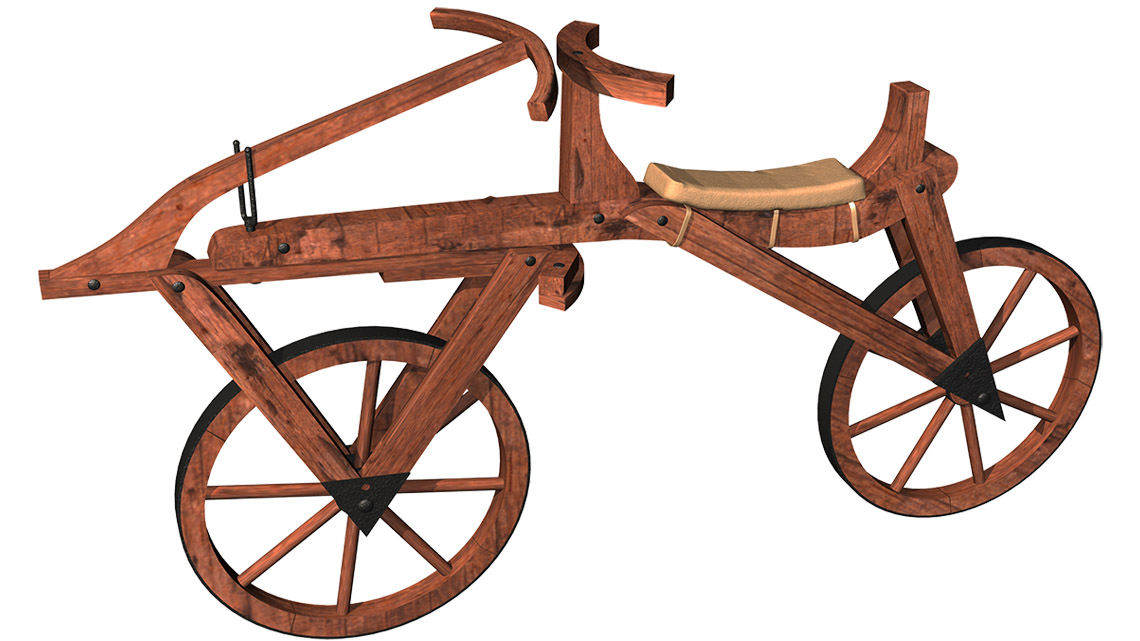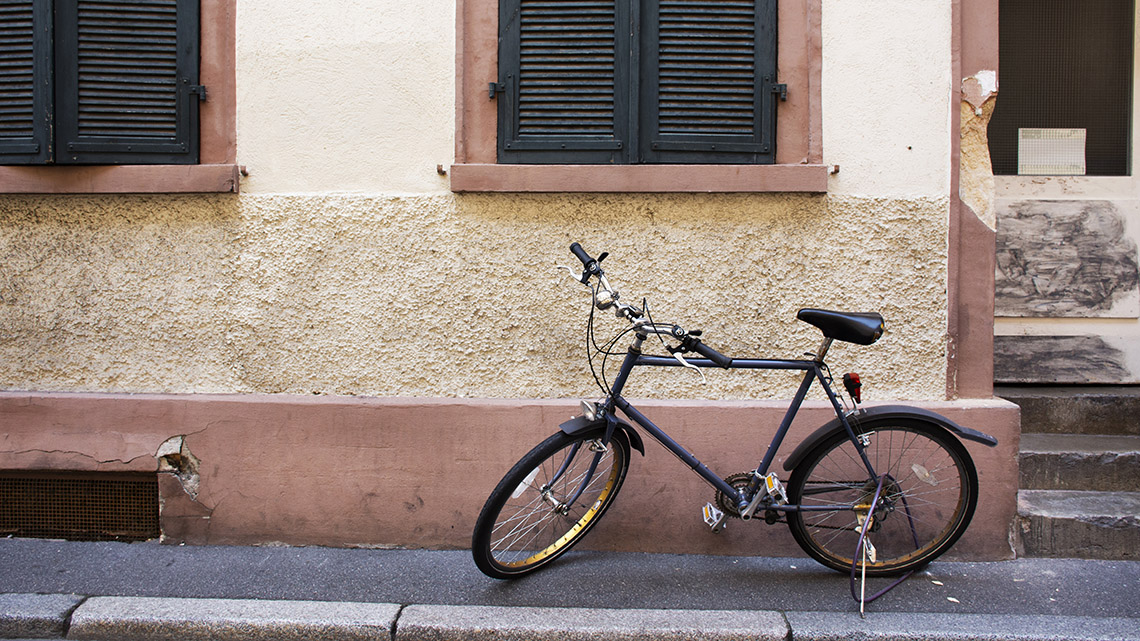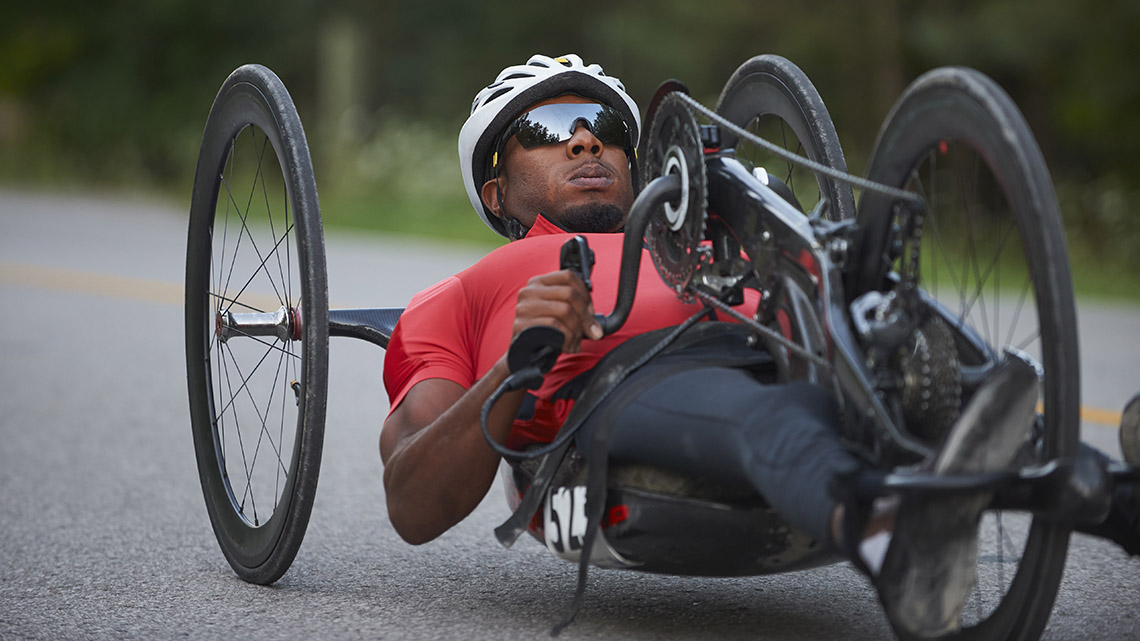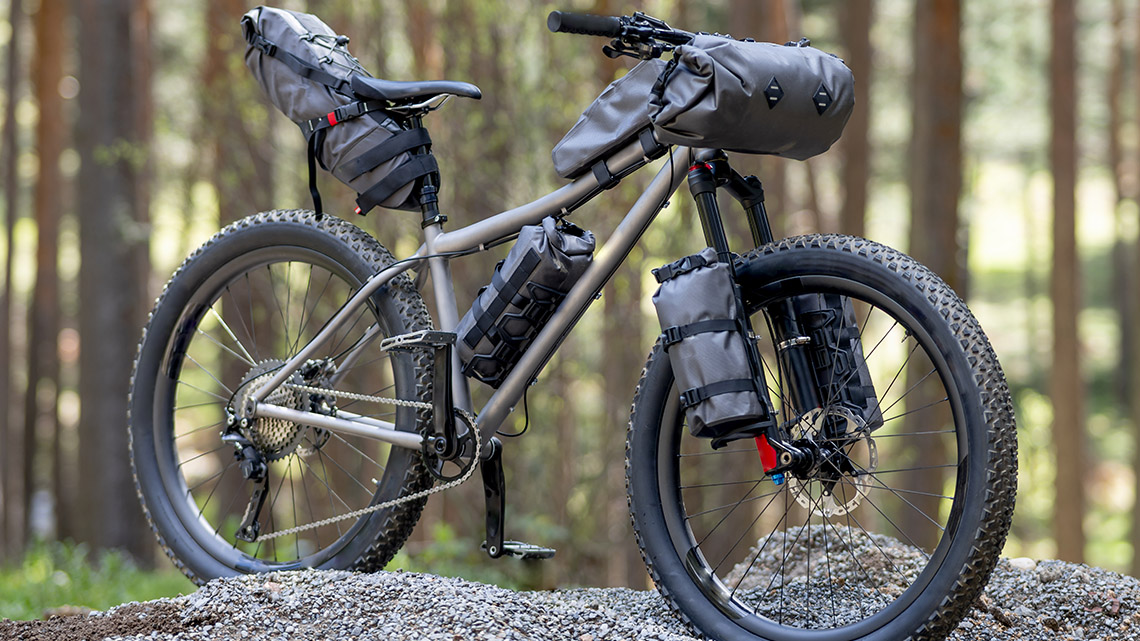Minds On
Bicycle design
Since the bicycle was first drawn as a sketch in the late 1400s, it has evolved over the years.
Explore the following images of bicycles over time.
What are some of the similarities and differences?
Record your thoughts in a method of your choice.
Image 1: A two wheeled bicycle made from wood. It had a curved seat area attached to a board. A wheel at front and a wheel at back attached to the boards. There is a steering handle that attached to the front wheel. Image 2: This bicycle has two wheels of the same size. There is a series of bars that attach the wheels to the gears and pedals, the handlebars and the seat. There are hand gears and hand breaks. Image 3: A three-wheel cycle with one wheel in front and two wheels in back. The seat is large and rests low to the ground. The rider lies down on their back and works the pedals with their hands. Image 4: A bicycle with thick front and back wheels. The series of bars between the wheels are thicker than other bars. There are springs on the bar that surrounds the front wheel. The seat is long and thin, and the handlebars have gears and brakes attached.
Why do you think the bicycle was first developed?
Record your answer in a method of your choice.
Action
History of the bicycle
The bicycle has a long history. Since the early 1800s, people have been inventing machines that include one or more wheels that can transport people.
Press the following tabs to access how bicycle design has developed over time.
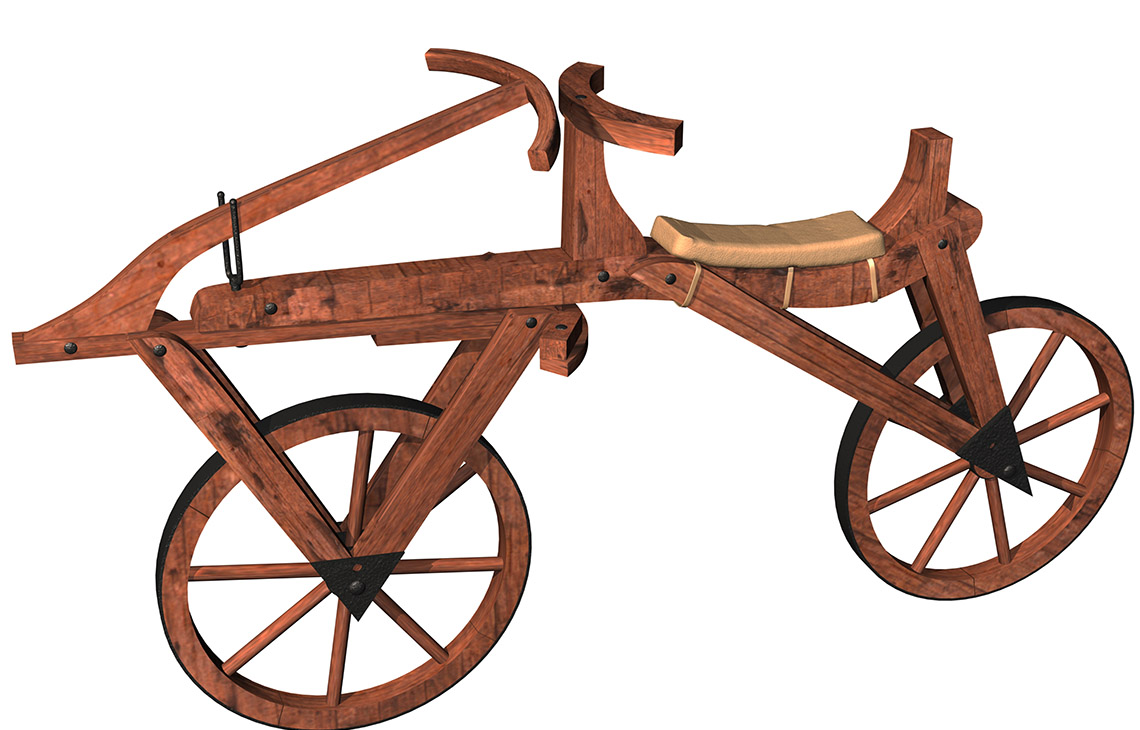
In 1817, the first two-wheeled bicycle was invented that was steered by hand. It was invented as an alternative to riding or using a horse for agriculture. This bicycle was made from wood, including the wheels. It did not have pedals. Instead, riders used their legs to move the machine.
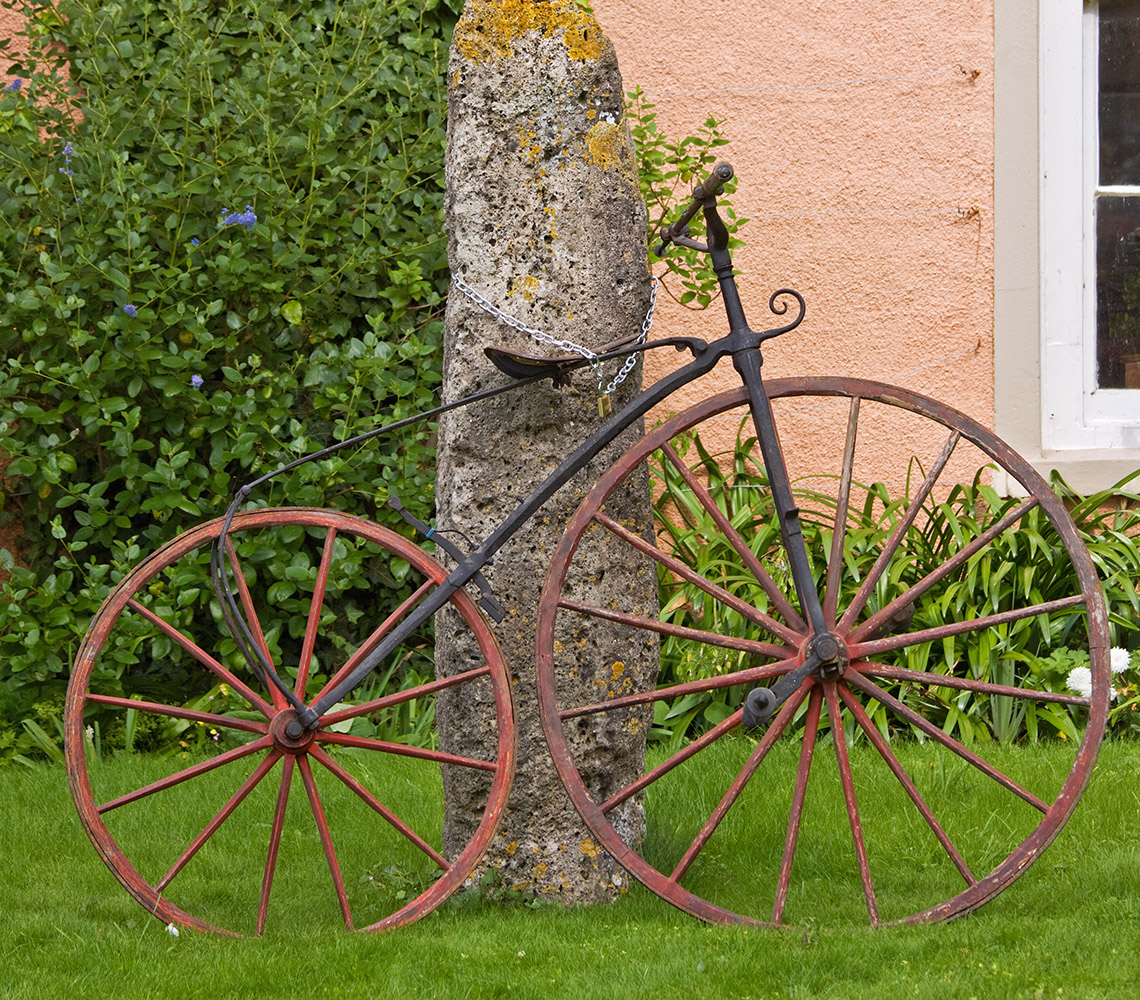
In the early 1870s, the “boneshaker” was invented. This was a bicycle that had steel wheels and was not comfortable to ride.
In response, the design for a “high-wheeler” was developed. This was the first machine that was given the name bicycle. It was more comfortable but also more difficult to ride because of the design of the wheels.
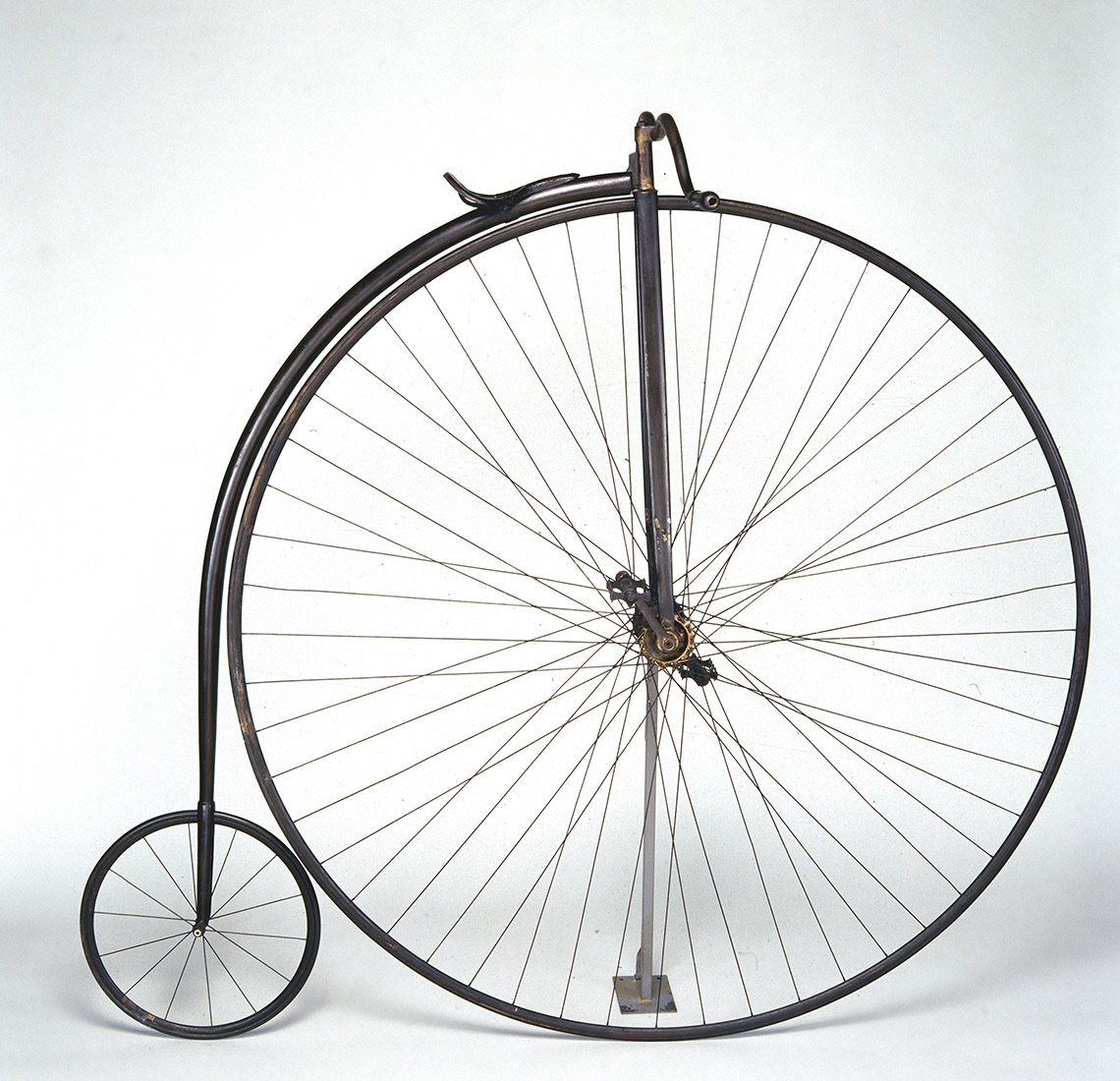
Because the rider sat at the top of the front wheel, if the wheel struck a rock or a crack in the road, the machine would tip forward and the driver would fall over the front wheel.
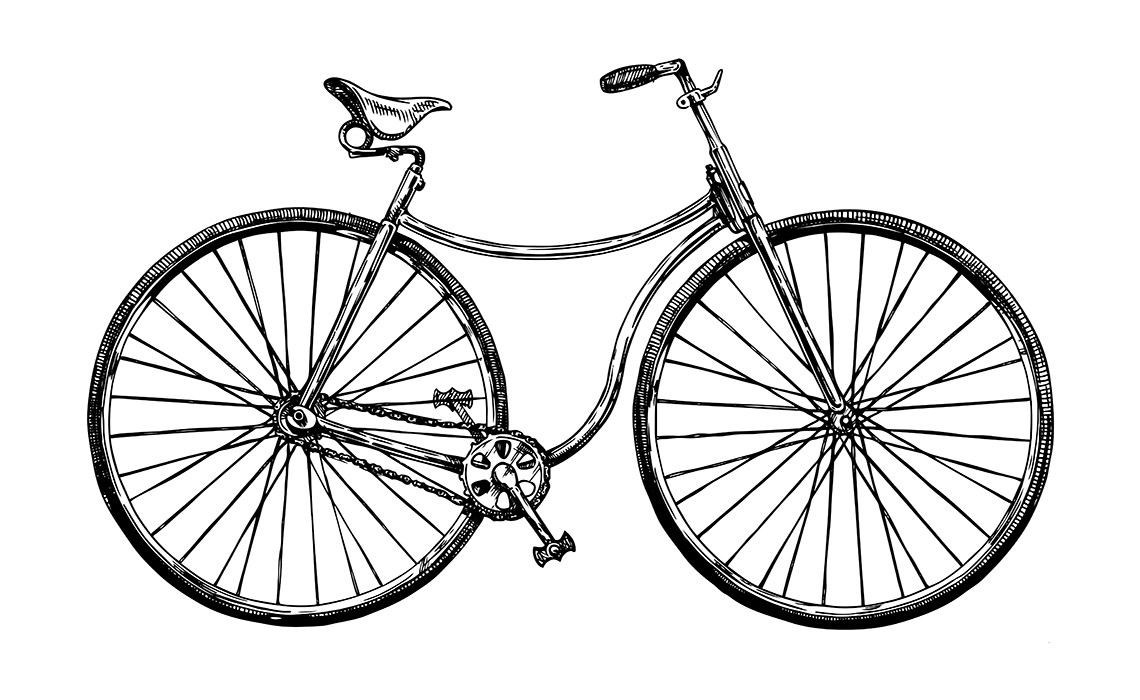
In the 1880s and 1890s, the “safety bicycle” was invented. At first the design included a large wheel in the back, but this was changed in the 1890s. This was a very important change in the history of the bicycle because it became a safe means of transportation.
The tire design of the safety bicycle is almost the same design as bicycles ridden today. This new innovation brought with it an increase of interest in riding bicycles. At this same time, there was a rise of mass production. This means that many bicycles were able to be manufactured at once.

In the 1970s, the BMX (bicycle motocross) bicycle was designed as imitations of motorized motocross bikes. They originated in California, USA.
BMX bicycles have lighter frames than other bikes. They were created to drive on roads and dirt paths. These bikes have stronger tires as well. These design choices allow the riders the opportunity to ride in many different environments quickly and make sudden changes of movement.
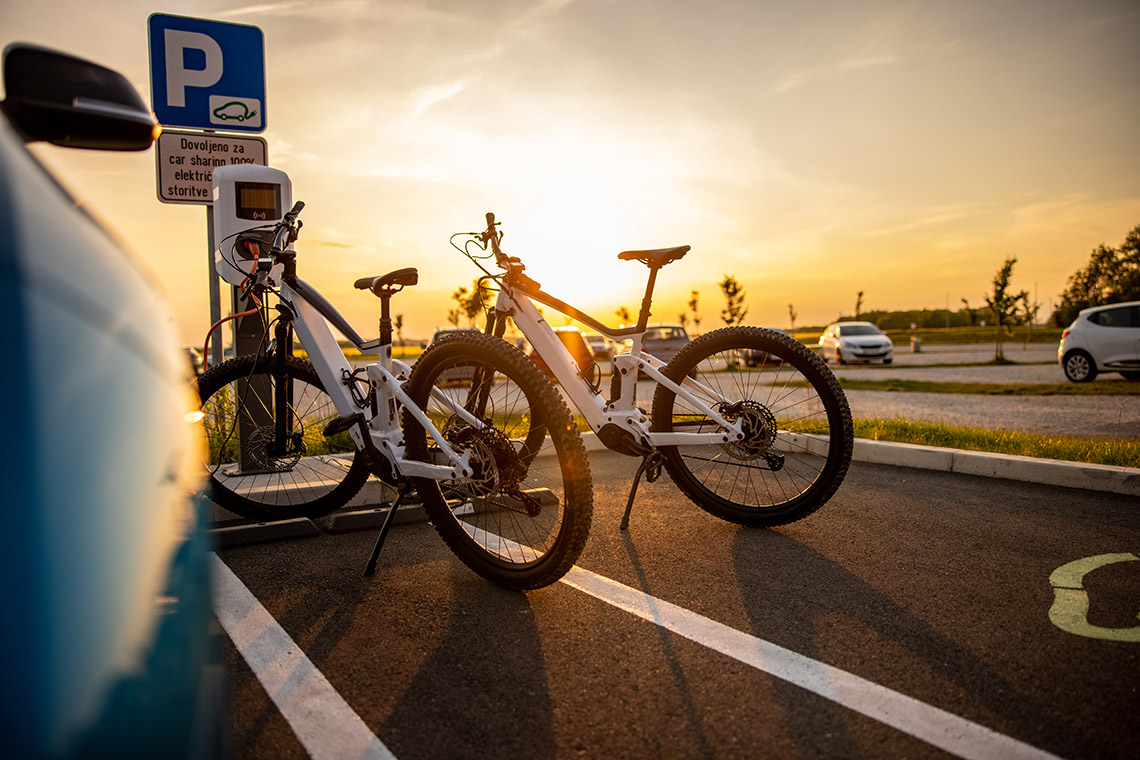
Although eBikes or electronic bikes had an original prototype invented in 1895, they were not mass produced until the year 2000.
There are many different varieties of eBikes but typically, their frames are lightweight and durable. They have pedal controls but also have motors that help riders up steep hills that give them speed.
Image 1: A two wheeled bicycle made from wood. It had a curved seat area attached to a board. A wheel at front and a wheel at back attached to the boards. There is a steering handle that attached to the front wheel. Image 2: A metal machine resembling a bicycle propped against a tree. It has a larger front wheel and medium-sized back wheel. It has metal handlebars and a metal seat. The frame attaches the two wheels in a partial upside-down V-shape. Image 3: This bicycle has a very large front wheel and a small back wheel. The frame is curved around the front wheel and has a small seat at the top of the wheel on the top of the curved frame. There are two handlebars that are close to the seat and the pedals are in the middle of the front wheel. Image 4: This bicycle has a front wheel and a back wheel that is the same size. There is a more complex series of bars that attach to the two wheels. The seat has a spring attached and the handlebars have grips. Image 5: This rider is crouching over the seat of this bike. It has a thick frame and smaller wheels. There are handlebars and a hand brake attached to the handlebars. The bike is travelling down a dirt hill and the rider is wearing a helmet. Image 6: There are two electric bikes at a charging station beside a parking lot. The bikes are on kick stands and are plugged in to charge.
Select one bicycle design from the 1800s and compare it to electric bikes (eBikes) of the 2000s.
Consider the following:
- the purpose
- the materials used
- the overall design
What are some of the main similarities and differences between the two types of bicycles?
How has the design changed over time? What kinds of improvements do you notice?
Record your ideas using a method of your choice. If possible, share your thoughts with a partner.
How does a bicycle work?
Now that we have explored how a bicycle design has evolved or changed over time, let’s consider how a bicycle works.
A bicycle is a complex machine. This means that it is made up of two or more simple machines.
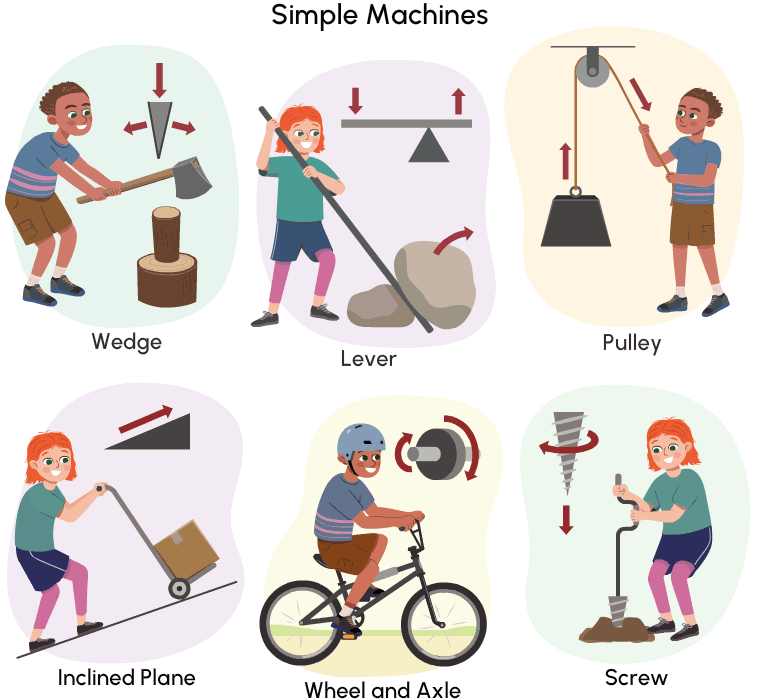
There are 6 different types of simple machines.
- wedge
- lever
- pulley
- inclined plane
- wheel and axle
- screw
Which of these simple machines make up the design of a modern bicycle?
Press ‘Answer’ to access which simple machines work together in a modern bicycle.
Explore this labelled drawing of a bicycle that shows the simple machines working together in a bicycle.

A child riding their bicycle with the title "What simple machines are seen on a bicycle?" On the left, it says "Screws are used to put the different parts of the bicycle together" and the simple machines are labelled: inclined plane, wheel and axle, lever, and pulley.
Bicycles and energy
Bicycles turn energy that is created by human bodies into kinetic energy, which means that the energy is created by motion. This energy moves the bicycle. The balance of the rider and the momentum created by speed keep the bike stable while riding.
Let’s explore internal and external forces and how these relate to bicycles.
Forces
Bicycles are created to hold weight and withstand different internal and external forces acting on them.
A force is something that causes a push or pull action on an object.

Internal forces
Let’s explore internal forces. Internal forces are forces or loads that act on a structure from the inside.
In the case of a bicycle, the internal forces are the components of the bicycle.
Pedaling creates an internal push and pull action.
Friction is an internal force caused by any parts of the bicycle that move against each other, including:
- the brakes
- friction keeping the rider on the seat
- friction keeping a grip on the handlebar
- friction to keep rider’s feet on the pedals
- friction in the movement of the chain
External forces
Now, let’s explore external forces. External forces are forces, also called loads, act on a structure from the outside.
Press ‘Description’ to access types of external loads.
A static load is a consistent force on a structure that does not change.
A dynamic load is a force on a structure that moves or changes.
Gravity is a consistent external force that acts on a bicycle. When a rider bikes up a hill, gravity will pull the rider backwards down the hill. This will make the riding more difficult for the rider.
Select the correct answer, then press ‘Check Answer’ to see how you did.
Air resistance is an external force that acts on a bicycle. A rider pushes the air aside as they move forward on their bicycle. It is most noticeable when a rider is riding the bicycle quickly. If a rider wants to reduce the air resistance, they can lean further down, push their chin toward their chest and rest their arms on the handlebars. This makes them smaller, which can reduce their air resistance.
Use the definitions of static load and dynamic load to answer this question.
Select the correct answer, then press ‘Check Answer’ to see how you did.
Choose one internal and one external force acting on a bicycle discussed above. How can each of these forces affect the rider of a bicycle?
Record your answers in a method of your choice.
Bicycle safety
In Ontario, everyone under the age of 18 must wear a bike helmet when riding. Bike helmets are specially designed to protect riders’ heads in case of falls.
Helmets are a type of safety equipment that protects riders from the impact of a fall. Riders can also choose to wear protective padding on their elbows, and knees.
Riders can also wear other types of safety equipment which can protect them from injury.
Let’s explore this labelled diagram for other possible safety equipment.

A child riding their bicycle with safety equipment labelled: helmet worn properly, bright or reflective clothing, feet reach ground, reflectors, and bell.
How do you think these special features help to protect riders?
Record your ideas in a method of your choice.
Press ‘Possible Answer’ to access how these special features help keep a rider safe.
- helmets protect a rider’s head from injury in the case of a fall
- a bell allows a rider to be heard and can protect both the rider and others from a collision
- a reflector allows the rider to be seen in the dark
- bright clothing makes the rider more visible
Innovative design
Innovations in the design of bicycles continue to advance.
Let’s explore some recent innovations that help to make bicycle design even more rider friendly.
What are some other considerations that riders may want from bicycles in the future?
Record your ideas in a method of your choice.
Consolidation
Your turn!
This learning activity connects new and existing approaches for young scientists to create positive changes in their communities.

For this task, use your learning to design a bicycle that would be popular in your community.
Before beginning your bicycle design, explore how the engineering design process works.
You will be using the steps included to design a bicycle, but you will not be building, testing or improving your design.
Check out this video to learn about the steps of the Engineering Design Process.
You may record your design as a labelled diagram, as a recording, or as a written explanation.
Be sure to include the following:
Diagram criteria
Let’s think!
Consider the following questions and record your answers using a method of your choice.
- Which step of the evolution of the bicycle outlined in this learning activity helped to make the bicycle a more popular transportation choice? Why?
- How do bicycles, as a machine, help to make movement easier for people?
- Which era (time period) from the history of bicycle design stands out to you the most? Why?
Reflection
As you read through these descriptions, which sentence best describes how you are feeling about your understanding of this learning activity? Press the button that is beside this sentence.
I feel…
Now, record your ideas using a voice recorder, speech-to-text, or writing tool.
